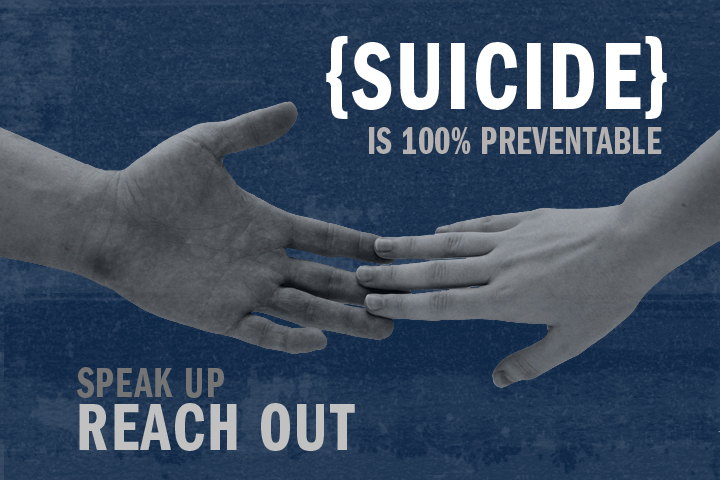
By Becki Cohn-Vargas, Not In Our School Director
Recently, a group of Not In Our School student leaders in Soledad, California shared with me an anti-bullying video they made to show at their high school. The video dramatized a fictional girl who was cyberbullied and ended up stabbing herself to death in the nurse’s office.
I asked them why they felt they needed to highlight suicide when they were appealing to their peers to stop bullying. “Kids today are used to high school drama,” they told me. “And besides, they won’t listen to us if we just talk about ‘not bullying’.”
With something as horrific and complex as suicide, there is no getting it right, there is no way to have the right response every time. And there are no easy answers. With more than 38,000 suicides in 2010, suicide is the 10th leading cause of death in the U.S. and the third leading cause among teens, according to the American Foundation for Suicide Prevention.
While it is important to drive home the serious harm of bullying, there are great risks involved with how suicide is presented. The important factor when talking about this and suicide is to be armed with facts and to become cognizant of messaging. It is my fear that some of the best intentions to get students to stop bullying by hammering the risk of suicide may indeed be driving youth to take their lives.
Bullycide is a Misnomer
Grammatically incorrect, the term ‘bullycide’ technically suggest that it is the bully, as opposed to the victim of bullying, who dies by suicide. Here are two misconceptions and potential dangers in the overly dramatic messaging that claims bullying is a leading cause of suicide, explaining the facts and risks.

Misconception #1. Bullying Causes Suicide.
The facts: While bullying is a risk factor in suicide, 90 percent of the people who take their lives have some form of mental illness, most often depression. A very small number of people take their lives after a dramatic bullying incident.
The risks: Young people who are bullied may come to consider suicide a typical reaction to being bullied. That might cause a depressed young person who gets bullied to become more likely to consider suicide.
Misconception #2. The person who is bullied and takes their life is a hero.
The facts: Large-scale media coverage leads to massive social media responses that put a spotlight on a person who chooses to die by suicide and may romanticize the person. Cases where the person who dies by suicide is turned into a hero have been found to contribute to a phenomenon known as suicide “contagion” leading to multiple similar suicidal responses. Approximately 10 percent of suicides are associated with contagion. Media coverage that also includes specific methods with detailed descriptions has been associated with repeated suicides
The risks: Media coverage, social media posts, and even student-made videos linking suicide to bullying can influence imitative acts and possibly a “cluster” of suicides.
What Will Happen When Suicide is Not Part of the Bullying Prevention Discussion?
While suicide is one of the risk factors, other impacts of bullying are much more common. Bullying research has shown that targets of bullying can be impacted in a range of ways, including school absenteeism, lowered grades, higher risks of substance abuse, and depression.
While we suggest removing the emphasis on suicide as the major risk from bullying, it will be crucial to not underestimate the serious impacts of all forms of bullying and intolerance. LGBTQ students or those who do not fit gender stereotypes and special needs students report experiencing constant harassment. Sikh and Muslim students are routinely called terrorists. Students who are overweight or underweight, short or tall, or as one student said, “when you are different in any way, you are targeted.”
Daily insults, teasing, bullying, exclusion and hazing all MATTER and addressing them will CHANGE lives. Meanwhile, knowledge of suicide risk factors and careful messaging about suicide will SAVE lives. Ultimately, a more empathetic school environment will help everyone identify and support both those who are being bullied as well as also those who are depressed or at risk of suicide.
Stay tuned for Part 2, “Bullying and Suicide: Working for Solutions,” with specific ideas for students, educators and media.
Becki Cohn-Vargas, Ed. D. is currently the director of Not In Our School (NIOS). She has spoken on the subject of how to combat bullying at conferences, schools, and universities across the United States. Becki’s new book,“Identity Safe Classrooms: Places to Belong and Learn,” co-authored with Dr. Dorothy Steele was published by Corwin Press. Prior to working at The WorkingGroup, she spent over 35 years in public education in California.
Comments
bullying
me and my friends are doing this thing about bulling because we have been bullied in the past i think it is never ok to bully people no matter how they look and act
Add new comment